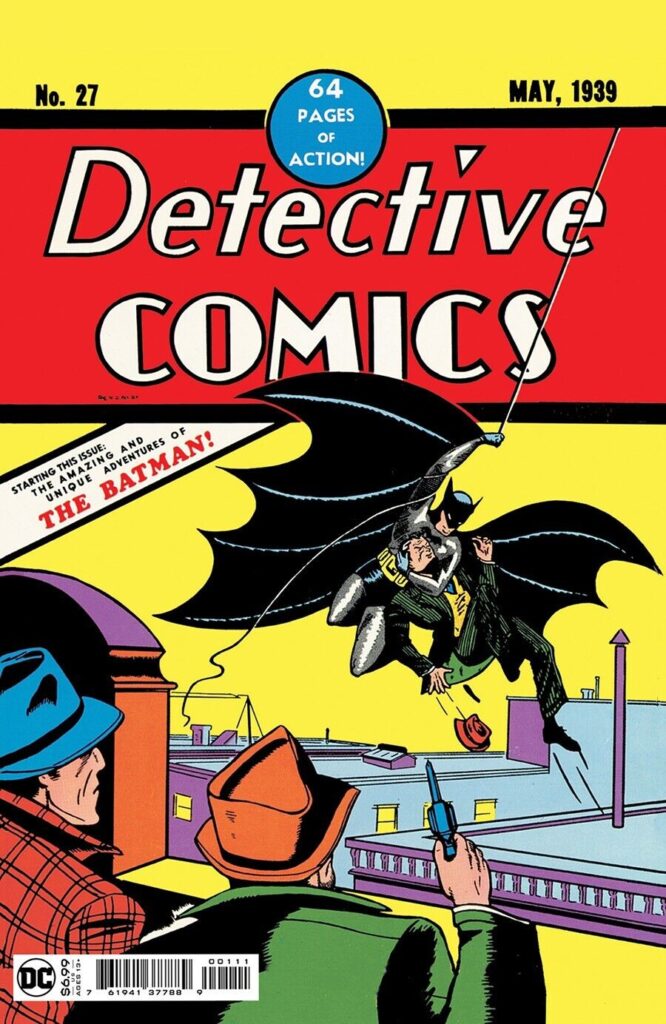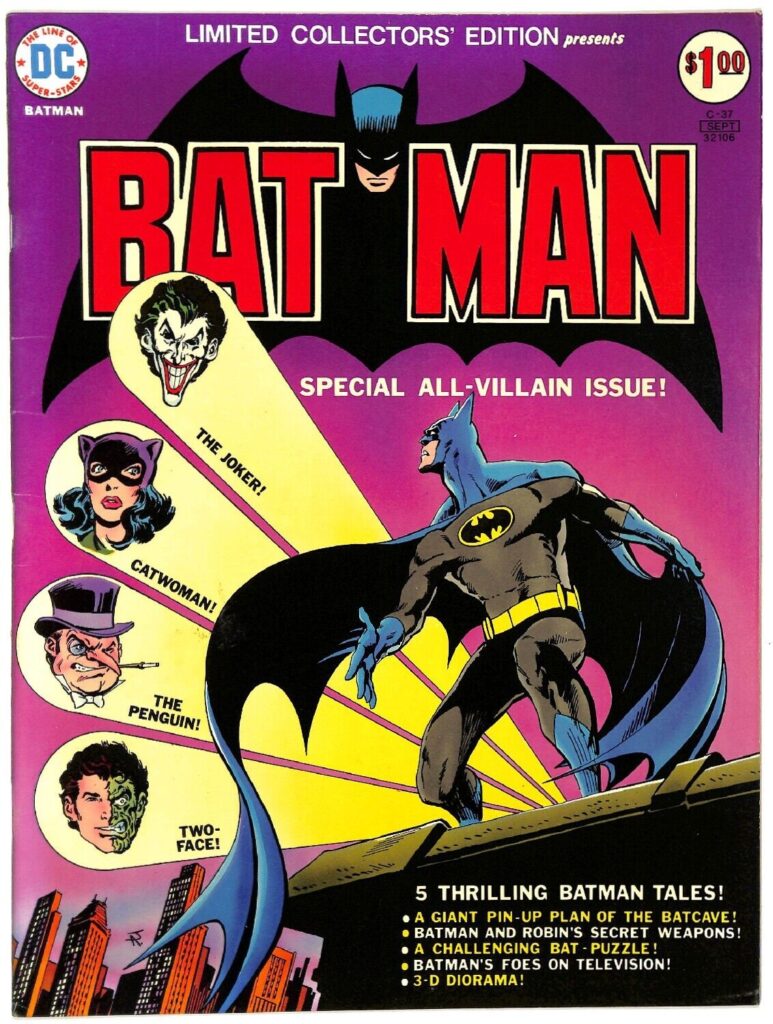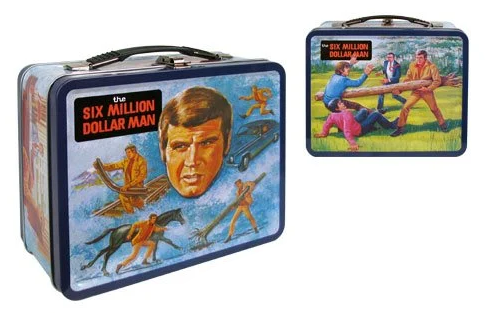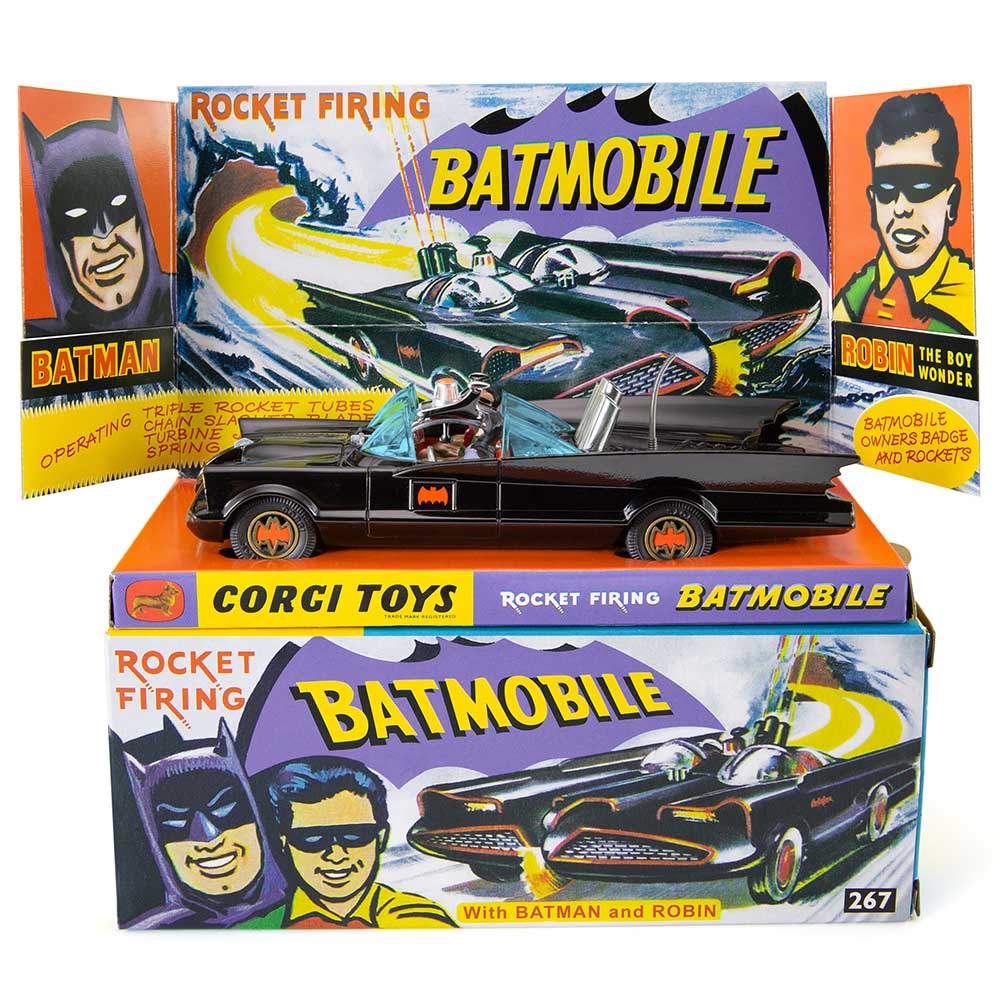LINKS
- Attack of the 50-Year-Old Comics
- Super-Team Family: The Lost Issues
- Mark Evanier's Blog
- Plaid Stallions
- Star Trek Fact Check
- The Suits of James Bond
- Wild About Harry (Houdini)
Ten years ago I did a series of posts here looking back at the year 1974, and now that that year is officially a half century in the past, I find myself thinking about it again. In particular, I was browsing Mike’s Amazing World of Comics site and spotted a book that made a big impression on me at age 9: DC’s “Famous 1st Edition” reprint of Detective Comics #27, featuring Batman’s 1939 debut.

The Famous 1st Edition books were “tabloid sized” at 10×14 inches, making them hard to miss at the newsstand, where they were too big to fit into a spinner rack. They also carried a price tag of $1, which was a lot to a kid like me, but worth it. Besides the comic stories themselves, they included the original text pages and advertisements, which made them a cool time capsule of another era. Flipping through them, I could almost imagine the experience my dad might have had reading comics in his youth. Often I was torn between laughing at the wacky junk offered up on the ad pages and wishing there was still someone on the other end of those mailing addresses to honor the offer.
I ended up adding a few more of these to my collection: reprints of Action Comics #1, Batman #1, Superman #1, Whiz Comics #1 and All-Star Comics #3 (with the debut meeting of the of the Justice Society of America). For me, it was just fun to get a peek into the Golden Age, but apparently to less ethical collectors it was a way to turn a profit. Each book featured a card stock cover wrapped around a reproduction of the original comic’s glossy cover and its newsprint contents, and I gather it was not unusual for unscrupulous types to pull off the card stock cover and sell the comic inside as an original. Without the newer outer cover with its modern markings and price tag, the only clue these things weren’t original was their larger size, which might not have set off any alarms with less informed buyers (as discussed here).
Recently, DC (and Marvel, and others) have returned to the well with a series of popular “facsimile” reprints of comic issues from various eras, including the original ads, letter columns, editorial pages, etc and sure enough an early entry was Detective Comics #27, this time in something closer to its original size but with a UPC code added to discourage misconduct (well, and also to enable a purchase). Another clue that it’s new is the whopping $6.99 price tag, which would’ve made me faint in 1974. That’s a nearly 7,000% increase from the original cover price of Detective 27, though admittedly it’s a major bargain compared to the $1.82 Million paid for the original comic earlier this year.

Around the same time as those tabloid reprints hit the shelves in 1974, we also got DC’s “Limited Collectors’ Editions,” taking a more “curated” approach to reprints by cherry-picking stories from various eras instead of reprinting individual issues in their entirety. These were also of great appeal to me, and one of my favorites was issue C-37 (technically from 1975), featuring arguably the greatest Batman cover ever drawn by Jim Aparo, whose career was full of great Batman covers.

Recently DC announced that this issue, too, will soon be reissued in a facsimile edition in its original “tabloid” dimensions. This brought me to the sobering realization that I’ve lived long enough to see the “historical artifact” treatment applied to a book I bought new when it first came out. Indeed, more time has passed between my purchases in 1974 and today than between Batman’s debut and my purchases. Wow. It’s also kind of funny in that the upcoming facsimile edition will be a reprint of a book that was itself a collection of reprints. Then again, it’s kind of fitting for a genre that’s been eating its own tail for decades.
Up until now, my favorite “facsimile” of an artifact from 1974 (or thereabouts) was a recent reproduction of my cherished Six Million Dollar Man lunchbox, rebranded as a “tin tote” and fashioned at about 3/4 the size of the original, again probably to discourage fraudulent resellers (although the use of the “tin tote” label makes me wonder if maybe there isn’t a law these days against selling metal lunch boxes?).

Corgi Toys have also gotten in on the act with their reproduction of the die cast James Bond Aston Martin toy that made them their fortune back in the 60s and 70s. Later this year, they’ll be releasing a reproduction of their *other* most-famous car, the 1966 TV Batmobile, a toy so beloved we knew it by Corgi’s production model number, “267.” The original toy’s dimensions and details were not screen accurate; it featured clumsy stickers to simulate the real car’s painted-on “door bats,” had a huge metal “chain cutter” up front that never appeared in an episode and carried crudely painted figures of the Dynamic Duo. It was also thoroughly awesome and fueled countless hours of play for at least a couple of generations of Batman fans, so I may be in trouble when this thing streets. By the time I got mine in 1974, it had gone through several tweaks and modifications, including the addition of a trailer hitch to pull the bat-boat. The repro will feature the original red wheel bats and the colorful box that doubled as a display stand, sadly phased out by the time I showed up.

Sometimes I wonder what all these repros are doing to the collector’s market. How much demand can there be for the original items when you can affordably acquire something that’s “close enough”? Isn’t scarcity the whole key to some items’ value? But of course DC and Corgi and Universal, etc don’t see any profits from those sales on the secondary market, so they don’t owe those collectors anything. Maybe I should feel bad for the folks who shelled out big bucks for vintage items, but in truth most of them have no interest in actually reading the comics or enjoying the toys, anyway; it’s all just an investment for them, something to sit on until they can turn a profit by selling it again. Or at least something to display and brag about because they have it and someone else doesn’t. In that sense, it’s cool that so many more people are now able to experience the fun of owning this cool stuff. Or at least a reasonable facsimile.